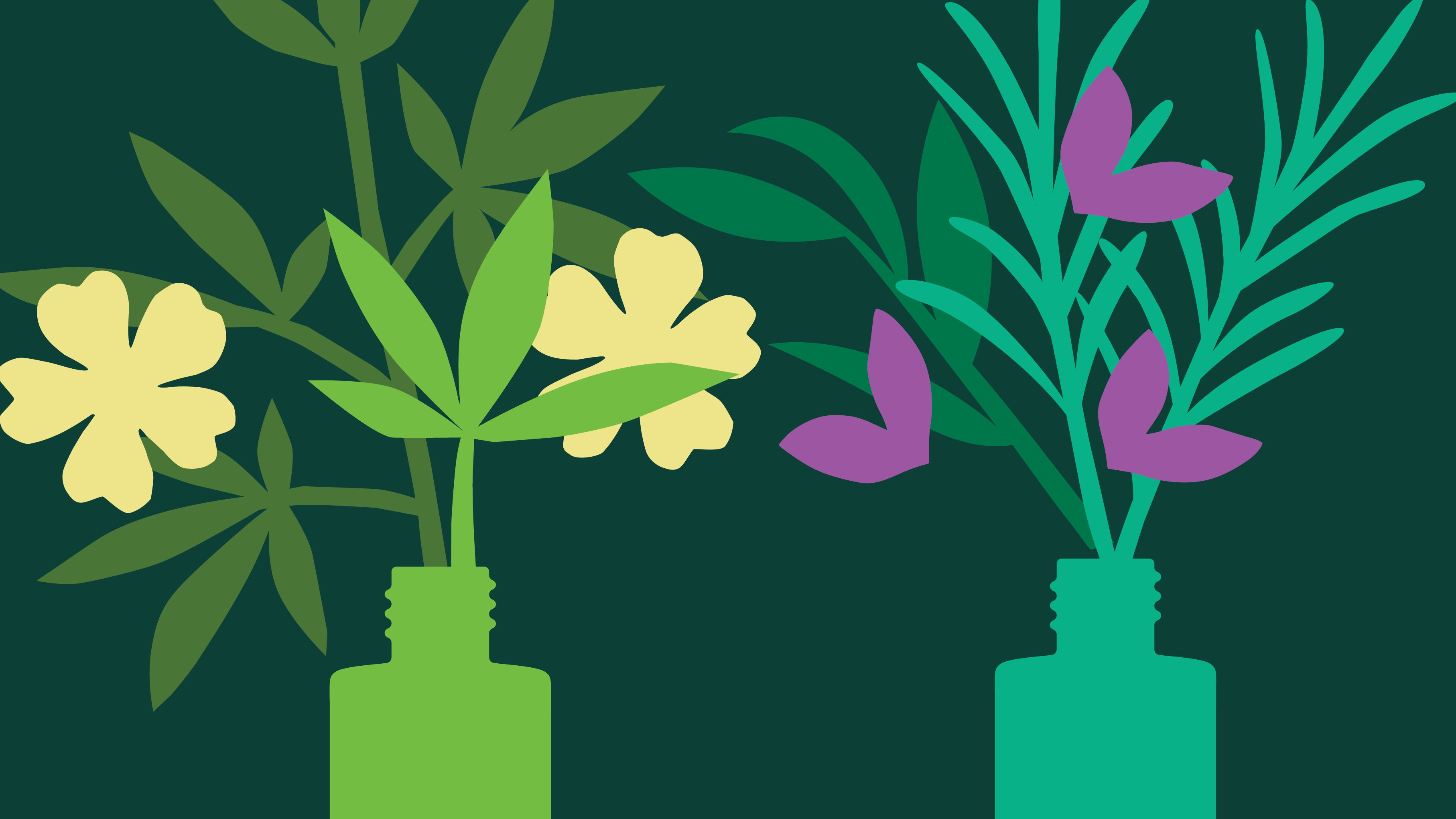
1, December 2023
How to Use Essential Oils
Essential oils don’t just smell wonderful; they’re mighty ingredients known to help with wellbeing. But because of their power and potency, essential oils should always be approached with knowledge and caution. Our founder, Rivka, is a trained aromatherapist who has been bringing her skills and expertise to blending the natural aromas in our products since the seventies. We asked her to tell us more about essential oils and how to blend them.
What Are Essential Oils?
Essential oils are liquids that are distilled using water or steam, or mechanically pressed, from plants. They capture the aroma of the plant they come from, or its essence (hence the name ‘essential’).
Essential Oil Uses
Essential oils are used in myriad ways. They’re often utilised as ingredients in skin and haircare, household cleaning products and even food and drink. In aromatherapy, it is believed that inhaling the aroma of certain essential may help with wellbeing.
There are many ways that people might administer essential oils for aromatherapy. This might be through adding them to water in an oil diffuser, or in massage. The ‘golden rule’ of essential oils is that you should never apply them directly to skin. Read on to find out more about that.
How to Mix Essential Oils
When it comes to working with essential oils, there’s no ‘one size fits all’ approach. What works for one person may not for another. You should always follow the golden rule above and never apply the oils directly to skin. And you should always take advice from a competent, professional aromatherapist. Rivka is just that, so we asked her how she goes about mixing essential oils.“The mixing of essential oils is not complicated but there are some important rules to follow,” she says. “Once you have taken advice from a trained aromatherapist on which oils might help you, you can go about blending. But it’s vital you stick to the rules. Never just guess quantities.”
Here are the rules Rivka recommends you follow:
- Always use clean, dry bottles and measuring equipment.
- Mix essential oils on a washable counter – they can damage some surfaces, for example wooden tables – please check.
- If using a vegetable carrier oil, have it available. Also known as a ‘base oil’, a carrier oil is an unscented oil used to dilute the essential oil when blending an oil for massage, or any contact with the skin. Popular examples of carrier oils include coconut oil, almond, peach kernel, jojoba and grapeseed oil.
- Write down your recipe on a pad, or record on your phone, so you will be able to recall your blend.
- Don't overcomplicate your blend; use one, two or three essential oils.
- When blending essential oils with a carrier oil, a recommended usage is 1% - 2%, depending upon the age and health of the individual. Again, always take advice from a professional, competent aromatherapist.
- 1% essential oil = 1 drop of essential oil to every 4ml carrier oil, while 2% essential oil = 1 drop of essential oil to every 2ml carrier oil.
- This means for only one essential oil used or a combination of essential oils used (total amount of essential oils used). Do not use more than the recommended percentages of essential oils.
- For children and the elderly, these quantities should be halved.
- Fill your clean, dry bottle with the required amount of carrier oil; typical amounts are 5ml or 10ml.
- Carefully and slowly add essential oils to the carrier oil, drop by drop. Gently mix and blend by rubbing the closed bottle between your hands to combine the essential oil(s) with your carrier oil.
- The essential oil blend is now ready to use.
Safety Precautions When Working with Essential Oils
Keep essential oils out of the reach of children. Keep essential oils away from eyes. If an essential oil has accidentally come into contact with the eye, immediately splash the eye with tepid water. Seek medical advice if a burning sensation occurs when using essential oil blends on the skin. Some individuals may have an allergic reaction to essential oils. During pregnancy, some essential oils should not be used. Always seek professional advice. Do not take essential oils internally.
Using Essential Oils in a Diffuser
If you’d like to enjoy the aromatherapy benefits of essential oils without mixing a blend in carrier oil, an oil diffuser is a great way to start. Diffusers emit essential oils into the air, filling your space with natural aroma – making it smell great and allowing you to inhale and enjoy the benefits. Most diffusers contain a well that you fill with water and then add drops of essential oil to. The amount of drops you need depends on the capacity of your diffuser – usually between six and 15. Check the instructions on your diffuser to find out the recommended amount.




